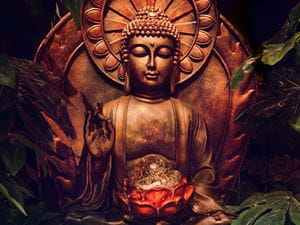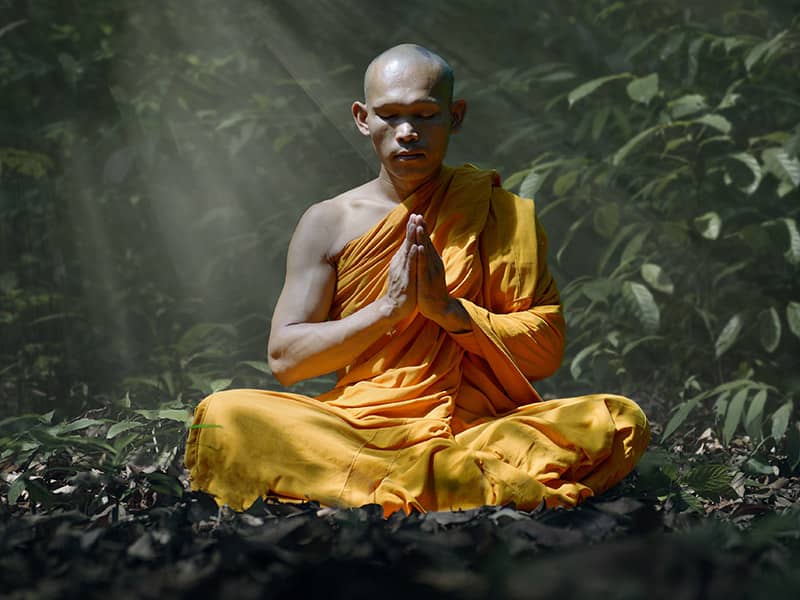
Most Westerners are passingly familiar with Buddhism, or at least they think they are. They are used to seeing images of the Buddha on self-help websites and have probably tried meditation at least once. They are familiar with the term “Zen” and want to reach nirvana. Many people in the West, however, fail to grasp that Buddhism is not a monolith. Just like any other religion, there are a variety of traditions contained under the umbrella term “Buddhism.” All of these traditions share the same basic foundation and core beliefs, such as karma, reincarnation and the authority of the Buddha. That does not mean, however, that they do not have quite a few differences.
Buddhism is usually divided into two or three main schools. Theravada, also somewhat pejoratively called Hinayana, is the oldest of the traditions and is predominately found in Southeast Asia. Mahayana is the Buddhism of China, Japan and other East Asian countries. Vajrayana Buddhism, meanwhile, is most commonly associated with Tibet though some scholars argue that Vajrayana is simply an offshoot of one of the other schools.Theravada
Theravada Buddhism is the oldest form of Buddhism. Adherents of the school are largely from countries in Southeast Asia such as Sri Lanka, Cambodia, Laos, Burma and Thailand. Theravada Buddhism does not believe in contemporary Buddhas. Instead, it only accepts past Buddhas and Gautama Buddha.Unlike some forms of Buddhism, Theravada Buddhism focuses almost entirely on liberating oneself by eradicating all defilements in one’s life. A person who is seeking to do this will attempt to “abstain from all kinds of evil, to accumulate all that is good and to purify [the] mind” through the Three Trainings. The Three Trainings are the development of ethical conduct, meditation and insight-wisdom.
According to Theravada Buddhism, all worldly phenomenon share three main characteristics. Everything is impermanent, unsatisfactory and lacks any sort of unique element that belongs to that phenomenon alone. Out of these three characteristics arises the idea that everything consists of specific characteristics, none of which can be referred to as a self. Understanding such ideas will help a person relieve themselves of ignorance, achieve higher levels of awareness and, eventually, nirvana.
Mahayana
Mahayana is the largest school of Buddhism today and is found primarily in Eastern Asia. Unlike Theravada Buddhism which is largely a single orthodoxy, Mahayana Buddhism is an umbrella term that includes a variety of different traditions. All of them, however, agree on the basic tenets of Mahayana Buddhism. Among these tenets is the belief that the primary motivation in life should be helping others. This is known as the Bodhisattva Attitude and references the goal of Mahayana practitioners. They aim to become bodhisattvas, holy people who spend multiple lifetimes teaching others how to escape samsara, even though they themselves have achieved enlightenment.As an umbrella school, Mahayana Buddhism contains two of the most famous Buddhist traditions, Pure Land Buddhism and Zen Buddhism. Pure Land Buddhism tends to focus not on Gautama Buddha but on Amitabha Buddha and holds that those who achieve enlightenment will be reborn into the Pure Land with Amitabha.
Zen Buddhism is perhaps the most famous form of Buddhism in the West, but few Westerners are familiar with even the basics of the tradition. Zen can be difficult to define, but it focuses largely on using meditation as a form of vigilance and self-discovery that leads practitioners to enlightenment. Zen itself is further divided into several schools, the most famous of which are the Soto Zen school and Rinzai Zen school. Soto Zen focuses on quiet meditation without anchors. Rinzai Zen, on the other hand, is known for practicing koan meditation. In this type of meditation, each student is given a riddle, or koan, to focus on while meditating. The riddles are nonsensical and meant to force each student to move beyond their logical, limited way of thinking.
Vajrayana
Vajrayana Buddhism is found largely in the Himalayan nations, especially Nepal, Bhutan, Mongolia and, most famously, in Tibet. As this is the form of Buddhism associated with the Tibetan religious figures known as lamas, Vajrayana Buddhism is sometimes called Lamaism.Despite often being treated as a third major school of Buddhism, Vajrayana Buddhism has been considered by some scholars to be either part of the Mahayana or Theravada traditions. That said, Vajrayana is distinct in many ways from both Mahayana and Theravada Buddhism. Both Mahayana and Theravada Buddhism often focus on increasing positive human characteristics and decreasing negative ones. Vajrayana Buddhism focuses on teaching adherents how to become a buddha in a single lifetime. This often involves practices such as reciting mantras, using mandalas, imagining gods and buddhas and utilizing mudras.
Like other religions, Buddhism is not an orthodox monolith. There are multiple traditions within the faith, each with their own history and take on classic Buddhist theology. Adherents from each of the three traditions walk the path to enlightenment and hope to achieve that goal. What happens to those who are enlightened is up for debate, but most people are content to figure that out later. Achieving enlightenment comes first. Then, everything else will naturally fall into place.

